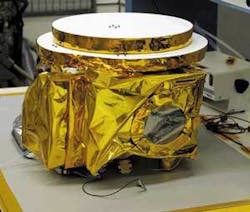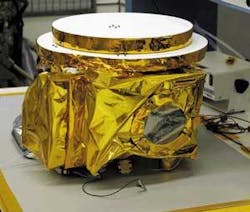Corning NetOptix provides optical components for NASA mission to Pluto
KEENE, N.H. - As scientists from the U.S. National Aeronautics and Space Administration (NASA) launched the agency’s first mission to Pluto and beyond in January, Corning NetOptix in Keene, N.H., became part of this historic chapter in deep-space exploration. The New Horizons craft began its 4 billion-mile journey with seven specialized scientific instruments for gathering new information-including components for the “Ralph” telescope assembly manufactured at the diamond-turning team at Corning NetOptix.
The Ralph telescope on the New Horizons craft is expected to reach Pluto’s atmosphere in July 2015. Corning’s telescope assembly will help Ralph serve as main set of eyes on the New Horizons mission by collecting the data that researchers will use to create maps of Pluto’s surface, as well as analyzing Pluto’s hazy atmosphere. It will also observe other objects in the Kuiper Belt-the vast region of icy debris in which Pluto is the largest member.
Jim Contrareas, former Corning employee and optical designer of the Ralph telescope for Ball Aerospace and Technologies Corporation (BATC) in Boulder, Colo., contacted the Corning NetOptix team in May 2004 to request the group’s help in creating the telescope.
The faintness of Pluto’s light levels presented a difficult task for the project team. Because Pluto is so far from the Sun, the Ralph telescope must work with light levels 1,000 times fainter than daylight at Earth-or 400 times fainter than Mars-so the telescope must be sensitive.
Corning’s contribution to the project occurred in three phases. During the first phase, the team reviewed the Ball Aerospace design and recommended changes to improve the manufacturability for the telescope housing, as well as the device’s three reflective optics.
Corning experts then performed precision single-point diamond machining on the critical surfaces of the metering structure. They also manufactured the mirrors, critically cleaned all of the telescope’s components, and assembled, aligned, and tested the telescope in a cleanroom.
During the process, the team “uncovered a critical issue, which may have been detrimental to the telescope after launch,” explains Jeffry Santman, senior systems engineer at Corning NetOptix and project engineer for the Ralph telescope program.
“Working with the BATC engineering team, we developed, implemented, tested and verified a solution in a matter of weeks, which not only recovered the design, but minimized schedule loss to only a month,” Santman says. “This was critical in this situation, where a missed launch window means a 250-year wait for a second chance.”
New Horizons will map the surfaces and compositions of Pluto, as well as Charon-the largest of the planet’s three moons. Charon is half the size of Pluto. The telescope will also aid in the search for clouds and hazes in Pluto’s atmosphere and for rings and additional satellites around Pluto and other Kuiper Belt objects.
“The Ralph telescope is the first example of an all-aluminum optical system of this kind being launched into space. This particular telescope, including the three reflective optics and enclosure, was completely manufactured from a single billet of aluminum,” Santman explains. “This has substantial benefits in designing for operation over wide temperature ranges, where glass and metal telescopes can have thermally-induced problems from thermal expansion.”
As the craft nears Pluto-Charon, the Ralph telescope will take images twice a day as the craft approaches, flies past, and looks back at the Pluto system, helping the mission team create a detailed map of the planet.
After Pluto’s observation is complete, New Horizons will head deeper into the Kuiper Belt to study one or more of the icy mini-worlds in a vast region, at least a billion miles beyond Neptune’s orbit.

